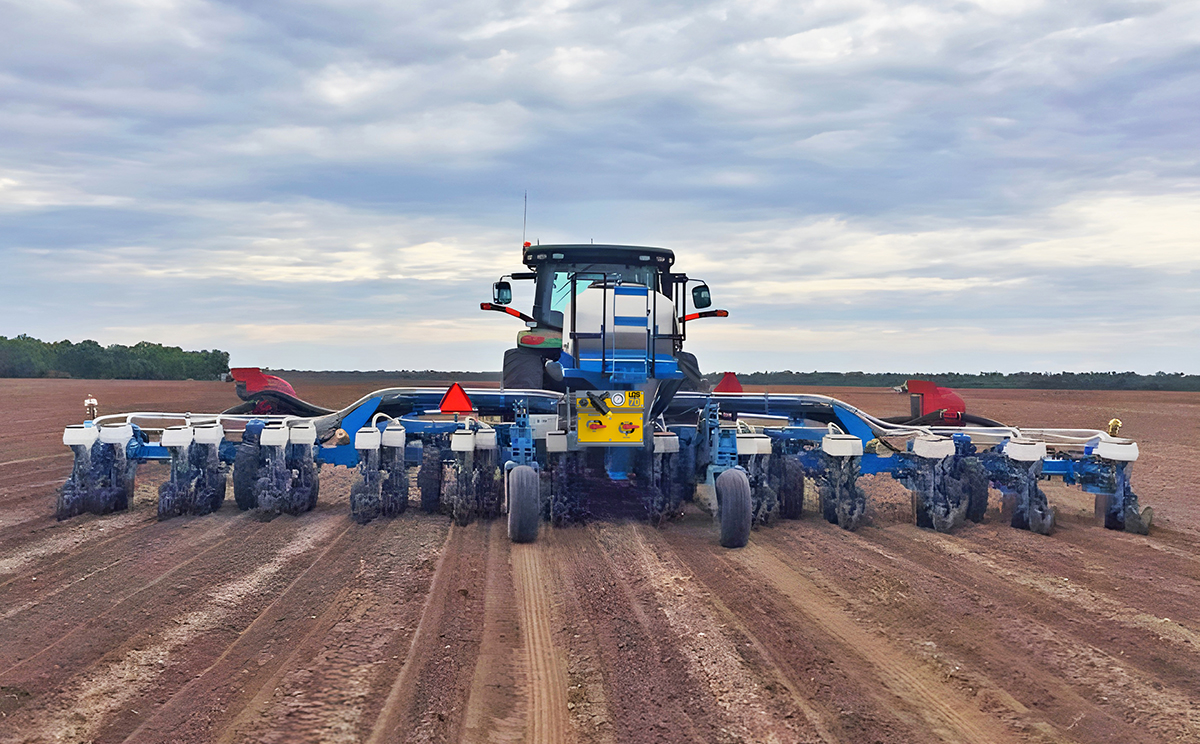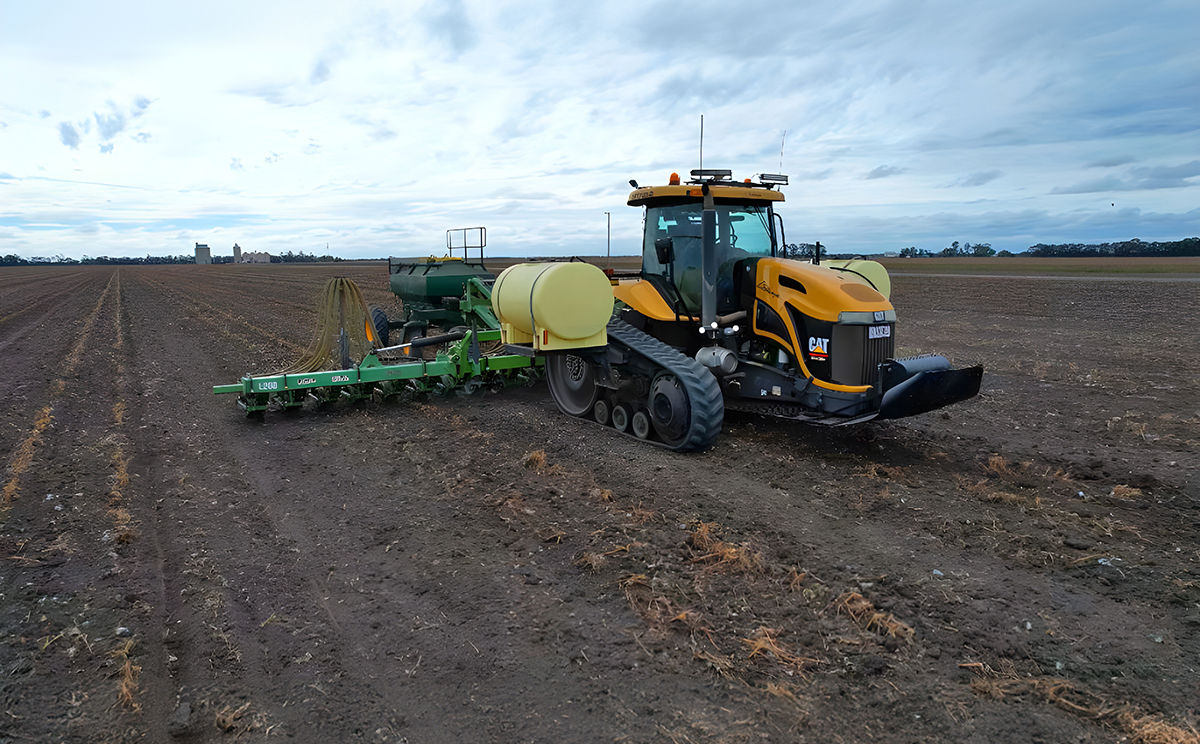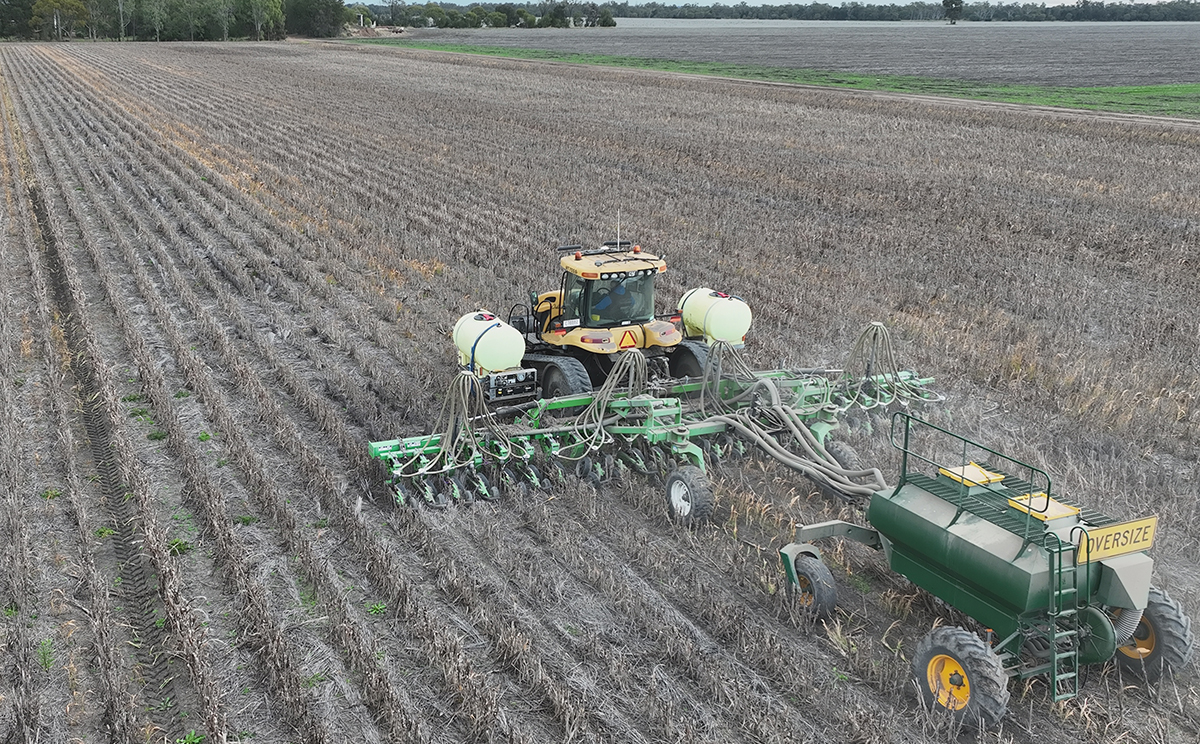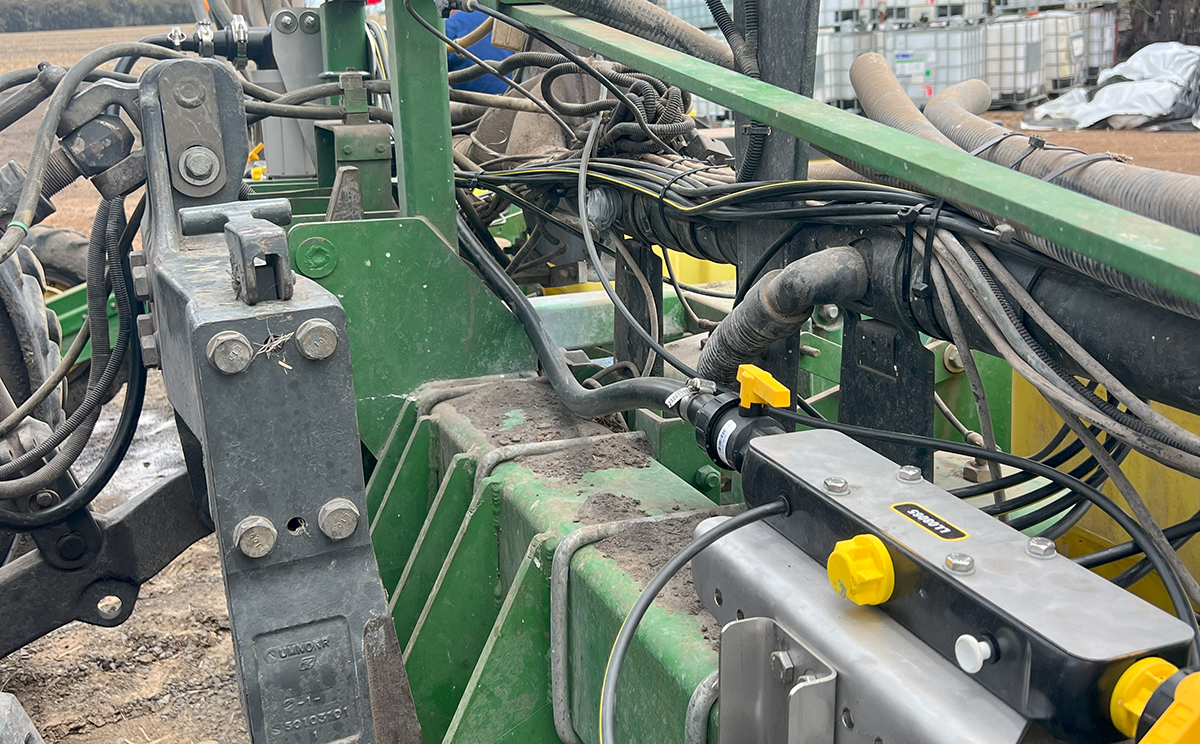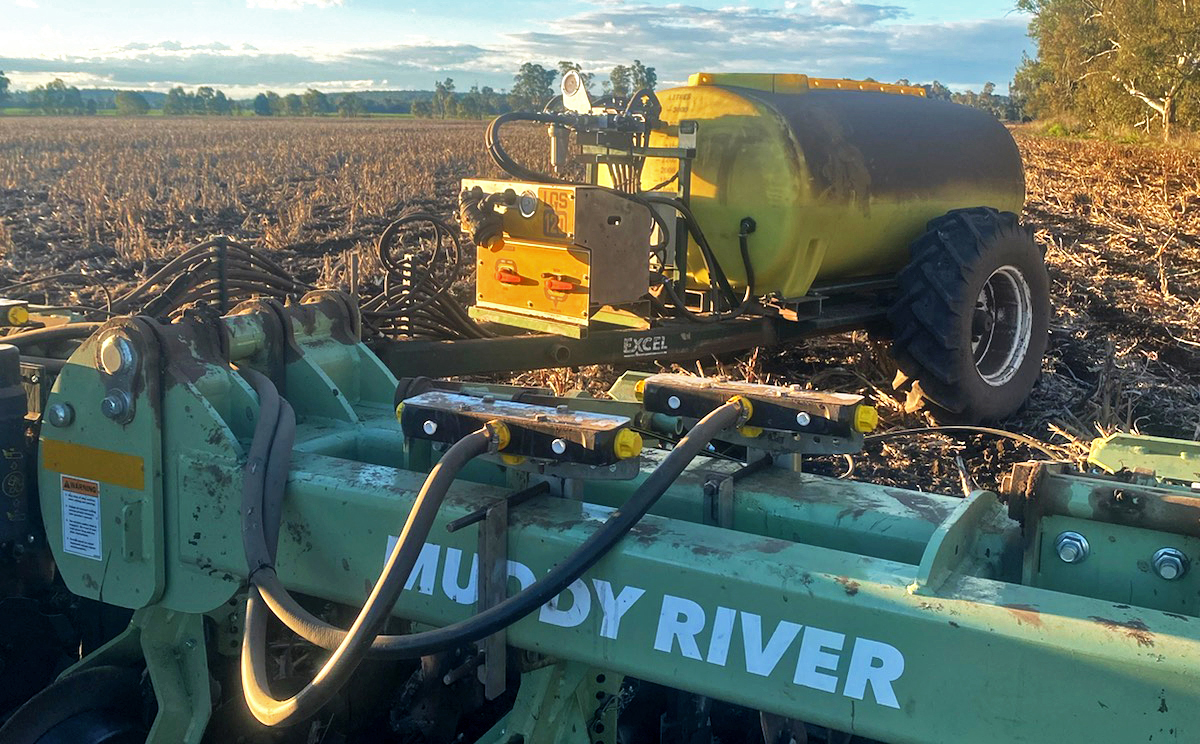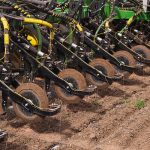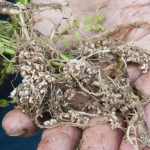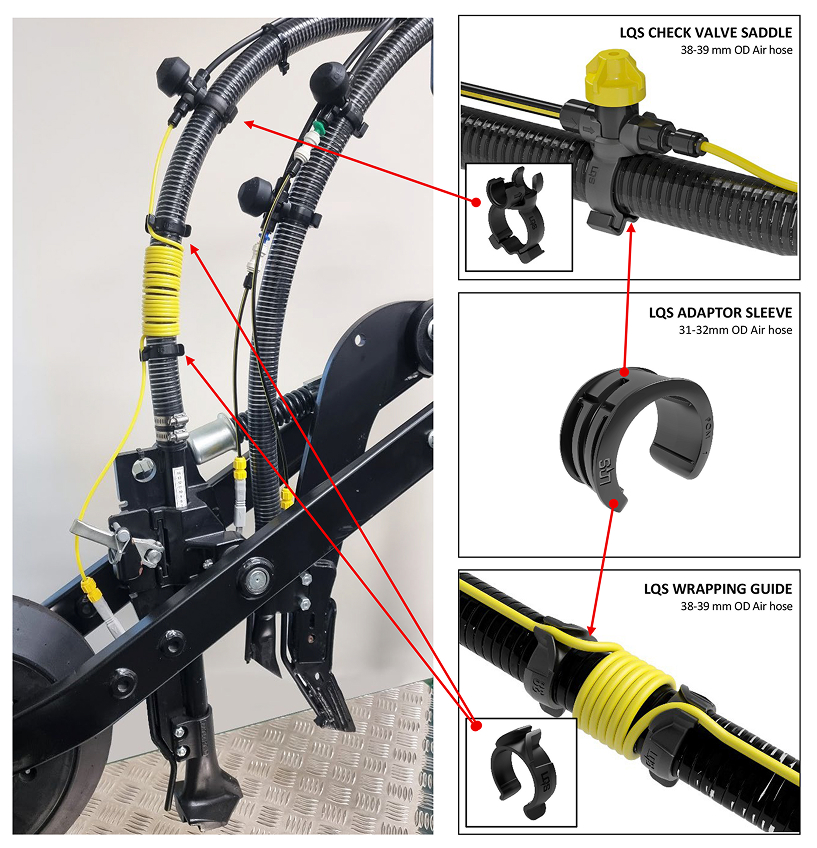Liquid Application delivers options to replace Anhydrous Ammonia Nitrogen and more!
A major anhydrous ammonia plant in Brisbane closed in 2022. This has posed a challenge for many growers. It has led them to explore other options for applying nitrogen. One such option is using liquid fertilisers as a replacement for anhydrous ammonia.
Switching to liquid in-furrow applications provides multiple advantages to farmers. One key advantage is greater flexibility with nutrient application and timing. Liquid fertilizers enable precise, targeted application. This optimizes nutrient uptake by the crops.
Another advantage of using liquid fertilisers is the ability to implement variable-rate applications. This means that growers can adjust the rates based on the needs of different soils. This leads to better nutrient use and potentially higher yields.
Liquids can be mixed for multiple applications in one pass, customising nutrient blends and simplifying passes. This helps streamline operations and improve efficiency in nutrient management. When starting with liquids, start simple. Seek Agronomic advice for mixing. In addition to their agronomic benefits, liquid fertilisers are easier and safer to handle and apply than anhydrous ammonia.
Our liquid delivery systems offer variable-rate liquid-ready systems. Controlled positive liquid pressure delivers liquid fertilizers, including fungicides, insecticides, nematicides, micro-nutrients, inoculants, biologicals, soil conditioners, and soil wetters at varying depths in the soil horizon.
They can be retrofitted to any liquid cart, drill, or planter, and plug-and-play with all leading brand controllers, giving growers a convenient and efficient way to switch to liquid fertilizers.
Liquid injection is becoming increasingly popular among growers in the Northeast of Australia who are looking to capitalise on the significant productivity and sustainability benefits of liquid fertilisers. By leveraging the benefits of liquid application options, growers can improve accuracy, efficiency, flexibility and safety in their nutrient programs.
Liquids offer greater flexibility with application and timing and UAN is a lot easier to work with and far less dangerous.” While there have been considerable equipment changes, he said, “The liquid system was easy to set up with great manuals and easy to flush and clean.
Dan Skerman, near Dalby, QLD, has been using liquid applications since about 2014. The family grows 40 to 100 hectares of irrigated cotton and up to 500 hectares of dryland cotton. They also grow various grain and legume crops. These include sorghum, mung beans, barley, wheat, and chickpeas.
Simplifying their rig has made planting easier. Given the diverse range of crops requiring different implements and passes, they mounted a second-hand Liquid Systems LQS176 Pump Module on a Cat Challenger Tractor with two 1100Lt saddle tanks and simply hook up to one of the three different planter options and away they go.
Two summer planters are set up for liquid pop-up, one for dryland cotton and one for irrigated cotton. Liquid goes down through a Keeton seed firmer into the furrow. Applying 10-20L/ha of Loveland Liquid Boost with water, 40Lt total at planting.
Dan said, “We quite often get a starter response, but it doesn’t always go through to yield just because of the seasons. But we usually get a visually healthier, stronger plant.”
In the irrigated cotton system, when the plants are a foot high, they hitch the liquid tractor to an in-row cultivator. They use it to side dress the cotton with 150 to 200 Lt/ha UAN. The liquid stream is placed in the soil 25–40 cm away from the plant in the side of the furrow.
Dan Skerman was particularly impressed by the operational streamlining of liquids when it came to planting pulses such as chickpeas and mung beans. They use the liquid system to water inject freeze-dry inoculant on the seed in the furrow during planting.
Not having to pre-inoculate the seed, it is so neat, we just water inject it on the seed. Once you do it like that, you’re like, Why the hell was I doing it the other way?
Dan said, “Not having to pre-inoculate the seed, it is so neat, we just water inject it on the seed. Once you do it like that, you’re like, Why the hell was I doing it the other way?”
Similarly, Jacob Kratzmann from Clifton, QLD, stopped using Anhydrous in July 2023 and mounted his Liquid Systems’ LQS120 Module with liquid section control on a 3000Lt Trailing Liquid Cart. This setup lets him hitch and swap between his liquid 1tRIPr Strip Till and disc planter for cropping sorghum, wheat, and barley.
Jacob says, “Liquids offer greater flexibility with application and timing and UAN is a lot easier to work with and far less dangerous.” While there have been considerable equipment changes, he said, “The liquid system was easy to set up with great manuals and easy to flush and clean.”
These setups of liquid application technologies are innovative examples. They show the farmers’ commitment to improving their farming practices and efficiency for different crops in all seasons.
Call your Dealer Today and why not Visit Liquid Systems (SA) at the 2024 Australian Cotton Conference, 6-8th August, Site 53, Gold Coast Convention & Exhibition Centre, Broadbeach, Queensland,

